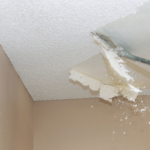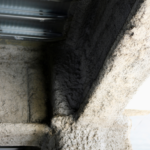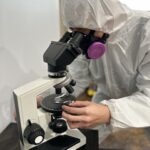What is Asbestos
Asbestos is a naturally occurring mineral. One of the most used types of asbestos is Chrysotile which is found in serpentine rock. Serpentine rock is also known as the California State Rock. Asbestos is recognized for its unique properties: High tensile strength, low heat and electrical conductivity, fire resistance, and is generally impervious to chemicals. Due to those properties, it is used in over 3,000 products. Many of those products are found in construction materials.
Asbestos can be found in thermal insulation, mastics, vinyl flooring, acoustic ceilings, joint compounds, roofing shingles, cement products, and fireproofing, to name a few.
Why Testing is Recommended and Health Effects
Federal and state regulations require an asbestos survey before demolition or renovation to verify the absence or presence of asbestos. When asbestos is undisturbed, it poses little danger. However, when asbestos is disturbed by cutting, grinding, sanding, scraping, etc., microscopic fibers are released into the air. These fibers are much smaller than the width and length of human hair and can be easily inhaled. Once inhaled, asbestos fibers can lodge themselves onto the lungs. Asbestos fibers are virtually indestructible. The human body cannot digest them.
Asbestos is associated with three major diseases.
- Asbestosis- The scarring of lung tissue, which leads to long-term breathing complications.
- Lung cancer- Asbestos dramatically increases the risk of lung cancer.
- Mesothelioma- It is the most serious of All asbestos diseases. Mesothelioma is aggressive cancer affecting the membrane lining of the lungs, chest, and abdomen.
The Testing Process
Asbestos testing is performed by collecting bulk samples of building materials and analyzed by an accredited laboratory using polarized light microscopy (PLM) to determine the presence or absence of asbestos. For local rules and regulations, please see our resource page.






